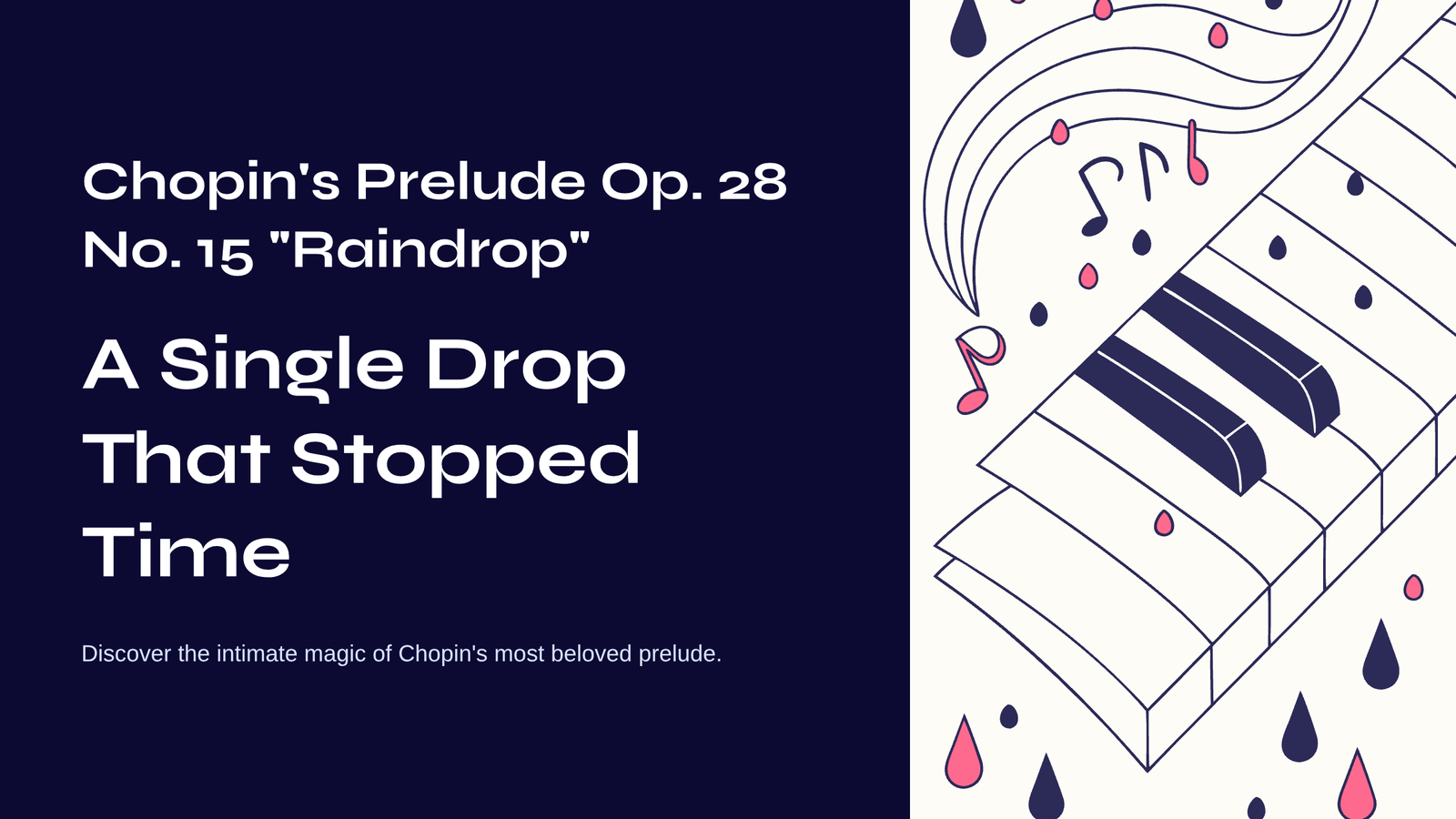Table of Contents
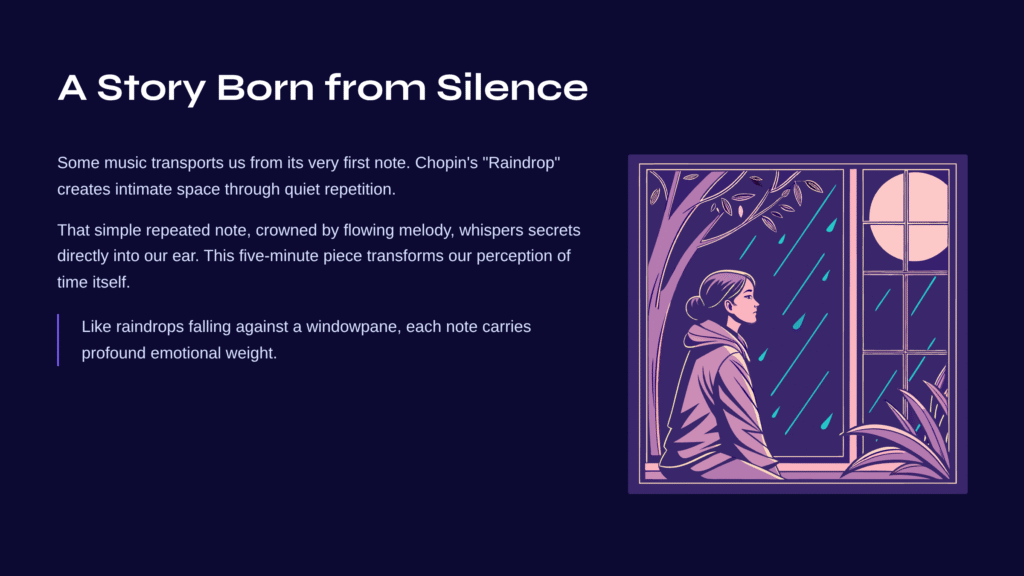
A Story Born from Silence
Some music transports us to another dimension from its very first note. Chopin’s Prelude Op. 28 No. 15, known as the “Raindrop,” is precisely such a piece. The moment we hear the left hand’s quiet repetition of a single note—like raindrops falling against a windowpane—we find ourselves already dwelling within the intimate space Chopin has created.
I remember vividly the first time I heard this piece. That simple yet mysterious repeated note, crowned by the melody flowing above it, felt like someone whispering a secret story directly into my ear. This music, contained within just five minutes, possesses the magic to completely transform our perception of time itself.
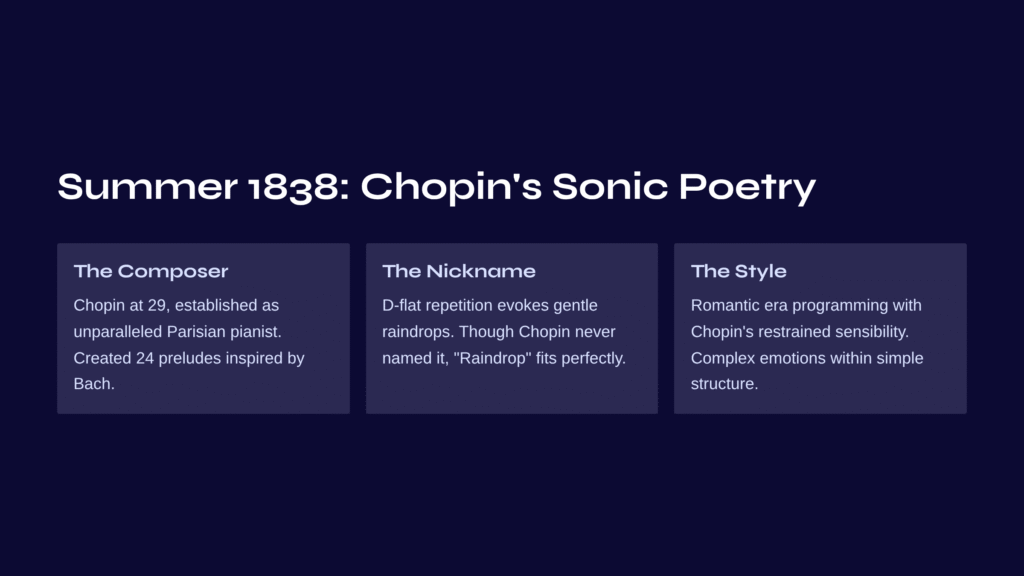
Summer 1838: Chopin’s Sonic Poetry
Chopin completed this prelude during the summer of 1838. At 29, he had already established himself as an unparalleled pianist in Parisian society. The complete set of Preludes Op. 28 consists of 24 pieces, each written in a different key, inspired by Bach’s Well-Tempered Clavier.
The 15th Prelude in D-flat major earned its nickname “Raindrop” because of the left hand’s persistent repetition of the note D-flat. This sound evokes the gentle patter of raindrops, hence the name. Though Chopin himself never gave it this title, it’s difficult to imagine a more fitting moniker.
While embodying the programmatic characteristics typical of the Romantic era, this work showcases Chopin’s distinctively restrained sensibility. It represents a moment where Chopin’s genius shines through—layering complex emotional depths within a deceptively simple structure.
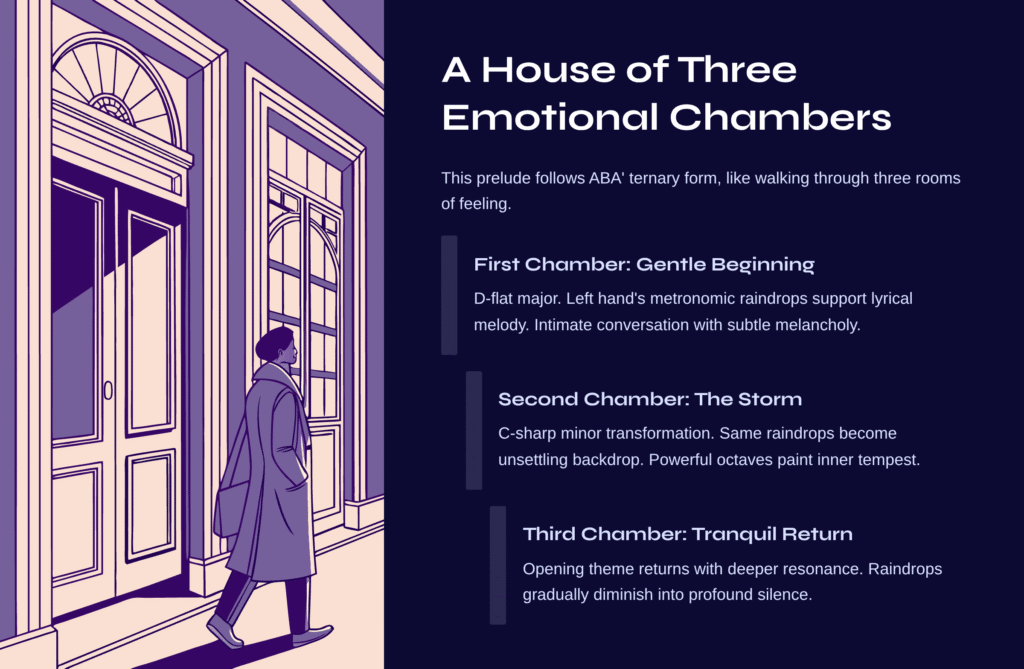
A House of Three Emotional Chambers
This prelude follows an ABA’ ternary form, like walking through three rooms, each revealing a different landscape of feeling.
The First Chamber: Gentle Beginning (A section, D-flat major)
As the piece begins, the left hand’s D-flat repeats with metronomic regularity. This becomes the “raindrop” motif that permeates the entire work. Above it, the right hand’s lyrical melody unfolds like intimate conversation. The sensation is truly extraordinary—demonstrating how beautiful a story can be woven above what might otherwise be monotonous repetition.
The melody flows with grace while harboring a subtle melancholy. Even within D-flat major’s inherent warmth, there’s a wistful quality that seeps through, like old memories surfacing while watching rain through a window.
The Second Chamber: The Storm-Swept Middle Section (B section, C-sharp minor)
Suddenly, the atmosphere transforms completely. The same repeated note, now heard in C-sharp minor, becomes an unsettling, tension-laden backdrop. The right hand’s melody undergoes dramatic transformation too. Powerful octaves and thick chords seem to paint an inner tempest.
Every time I hear this section, I’m filled with wonder. How can the same “raindrops” evoke such different emotions? The moment gentle rain transforms into violent downpour, we find ourselves breathless before Chopin’s musical imagination.
The Third Chamber: Tranquil Return (A’ section, D-flat major)
After the storm passes, serenity returns. The opening theme comes back, but something has changed. The same melody now carries deeper resonance—like the eyes of someone who has undergone a profound experience, more mature and peacefully beautiful.
In the final measures, the “raindrops” gradually diminish until they disappear into silence. The lingering quality of this moment is… truly beyond words.
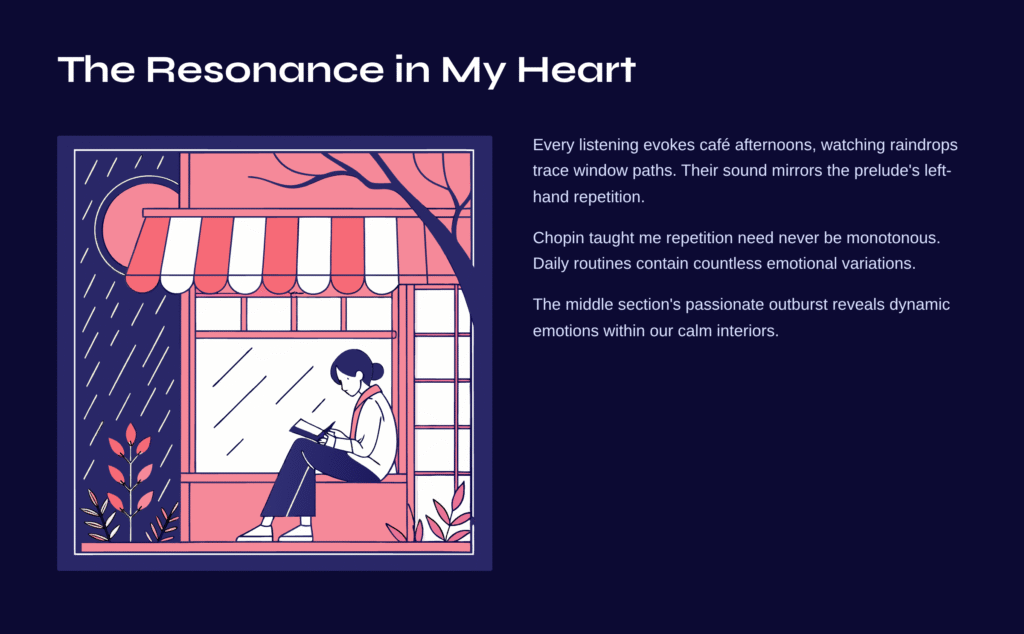
The Resonance in My Heart—Can You Hear It Too?
Every time I listen to this piece, a particular scene comes to mind: an afternoon spent reading by a café window, listening to the rain. Then, as now, raindrops traced paths down the glass, their sound as regular yet varied as this prelude’s left-hand repetition.
Listening to Chopin’s “Raindrop” taught me that repetition need never be monotonous. Even in our daily routines, we experience countless emotional variations. This piece’s greatest impact lies in its musical capture of such subtle everyday changes.
Particularly when hearing the middle section’s passionate outburst, I’m reminded of how dynamic the emotions hidden within our seemingly calm interiors can be. And the relief felt upon returning to tranquility resembles the comfort of coming home after a long journey.

Three Keys for Deeper Listening
First: Focus on the left hand’s “raindrops”
What initially seems like simple repetition reveals, upon closer listening, how varied these repeated notes’ roles can be. Sometimes they provide background, sometimes they take center stage, sometimes they create tension. Listen carefully to how the performer adjusts the dynamics and nuances of this repetition.
Second: Compare different performers’ interpretations
Rubinstein’s warm, lyrical interpretation; Argerich’s dramatic, free expression; Pollini’s restrained, structural approach—each offers distinct charms. The fact that the same piece can become such different stories depending on the performer exemplifies classical music’s fascinating nature.
Third: Notice the emotional transitions
Pay special attention to the moments transitioning from A to B sections and from B back to A’. At these pivot points, you can sense the magic Chopin weaves.

A Single Drop of Eternity Beyond Time
Each time I hear Chopin’s “Raindrop” Prelude, I’m struck by the thought that music is the art form that most beautifully sculpts time. How remarkable that such a rich emotional spectrum can be contained within just five minutes!
Like a single raindrop tracing its path down a windowpane, this music flows down through our hearts, leaving beautiful traces in its wake. I hope that someday, when you hear the sound of rain again, Chopin’s melody will resonate alongside it in your memory.
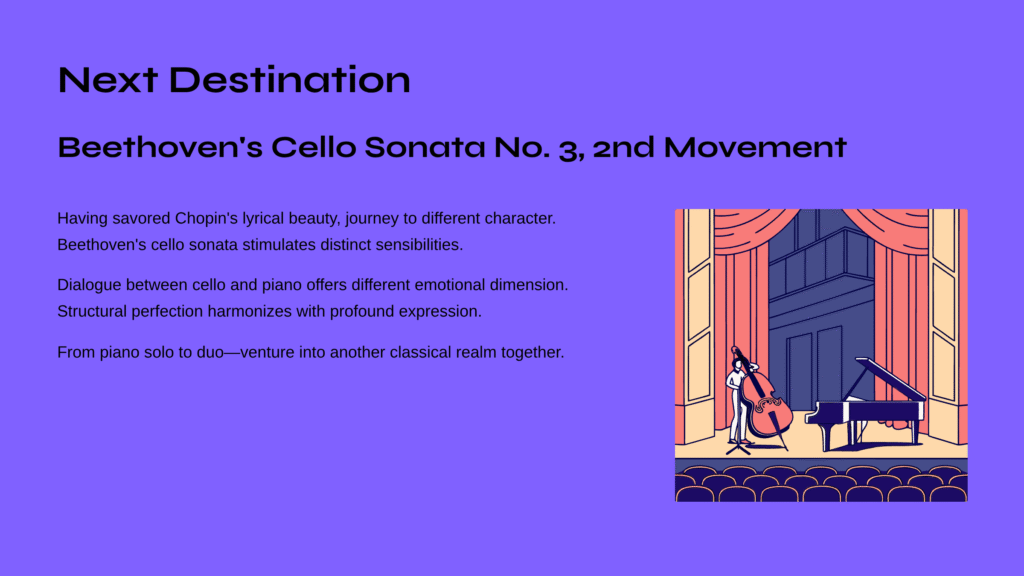
Next Destination: Beethoven’s Cello Sonata No. 3, 2nd Movement
Having savored Chopin’s lyrical beauty, shall we journey to music of a different character? Beethoven’s Cello Sonata No. 3, 2nd Movement stimulates our sensibilities in ways quite distinct from Chopin.
The dialogue between cello and piano offers a different dimension of emotion from Chopin’s monologue-like beauty. This movement, where Beethoven’s characteristic structural perfection harmonizes with profound emotional expression, provides the intimate experience of chamber music while simultaneously offering symphonic grandeur.
Watching two instruments converse, sometimes conflict, and ultimately converge into beautiful harmony promises to be a sufficiently captivating journey in itself. From piano solo to duo—shall we venture together into yet another realm of the classical world?
